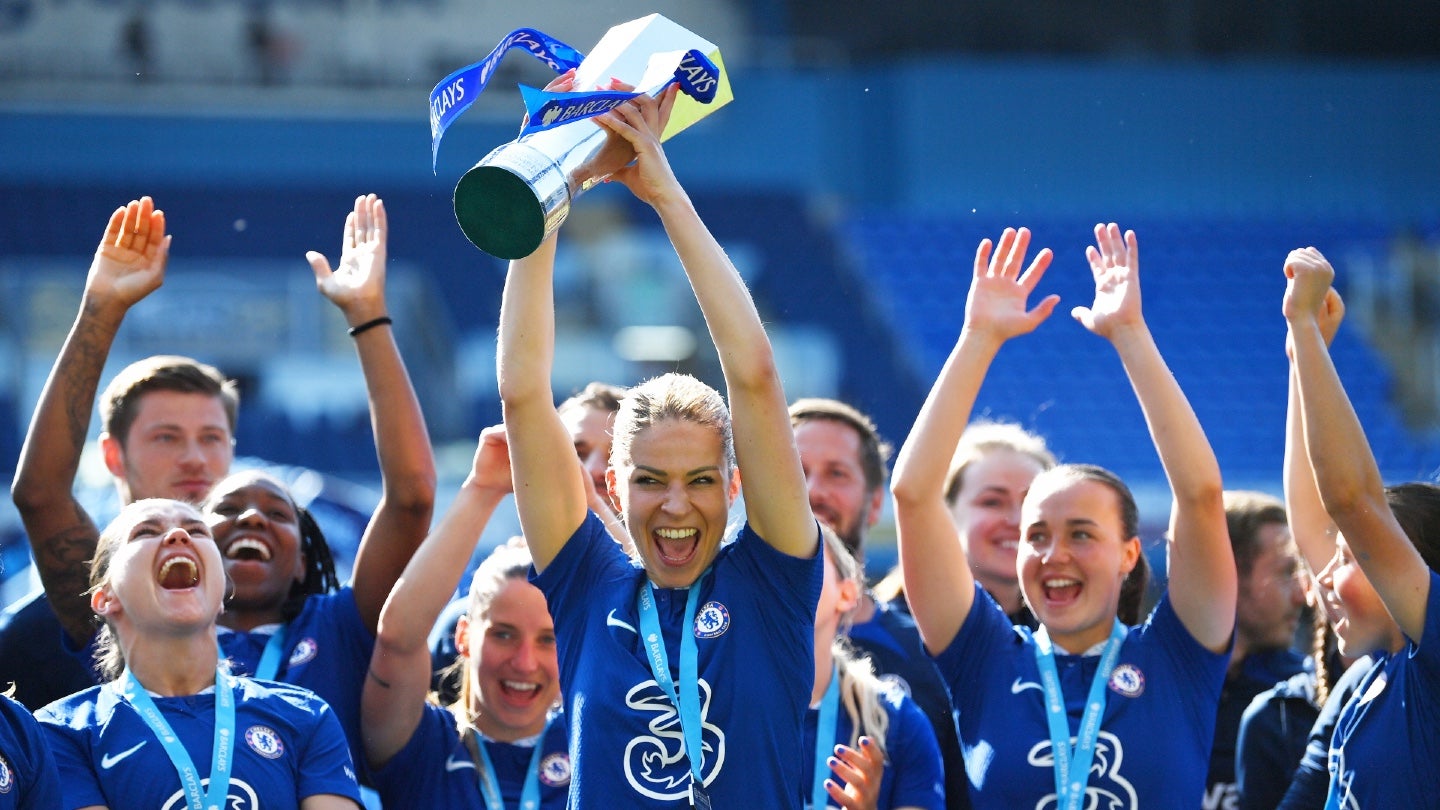
Revenues across the 12 clubs in English soccer’s Women’s Super League (WSL) top-tier competition rose by 60% in the 2021-22 season.
Figures from a report published by global professional services firm Deloitte show combined club revenues of £32 million ($40.2 million) during 2021-22, up from £20 million in 2020-21.
The report says the increase has largely been driven by increased levels of investment from the league’s title sponsor, Barclays Bank. The beginning of a new broadcast deal, for a reported £8 million per season with pay-TV heavyweight Sky, also led to “a significant uplift in broadcast distributions.”
Deloitte has called that tie-up “the largest broadcast deal of any professional women’s soccer league,” with 2021-22 representing the first season for which WSL broadcast rights were auctioned separately from those covering the men’s professional game in England. UK public service broadcaster the BBC also covers some WSL games live, showing 22 per season with Sky covering 44.
These tie-ups run through until the end of 2023-24.
While the original Barclays agreement, meanwhile, was for £10 million across three seasons, struck in March 2019, the new agreement is for £30 million of investment into women’s soccer overall between 2022 and 2025.

US Tariffs are shifting - will you react or anticipate?
Don’t let policy changes catch you off guard. Stay proactive with real-time data and expert analysis.
By GlobalDataDeloitte has said it “expects commercial revenue in the women’s game will continue to grow in future seasons.”
In terms of commercial deals, 10 of the 12 WSL sides shared the same front-of-shirt partner as their men’s team in 2021-22, “allowing WSL clubs to benefit from wider sponsorship agreements for affiliated men’s sides, which included some of the highest revenue-generating commercial deals in European soccer.”
In terms of matchday revenues, meanwhile, these accounted for less than 10% of the £32 million. Deloitte said that the average attendance in 2021-22 was 1,923 – although these numbers have risen significantly in the recently-completed 2022-23 season.
Women’s soccer in England as a whole has experienced an attendance boost since the national team won the 2022 UEFA European Championships on home soil in July last year.
Indeed, the average 2022-23 WSL crowd number was 5,616.
However, despite these significant revenue increases from both the sponsorship and broadcast rights sectors, overall the dozen clubs lost £14 million before tax.
The report said that aggregate wage costs across the 12 WSL clubs came to £25 million, up 37% year-on-year.
Tim Bridge, the lead partner for Deloitte’s Sports Business Group (SBG), said: “As leagues, clubs, and partners look to capitalize on the growth tailwinds of women’s soccer, ensuring sustainable growth, as well as competitive balance across leagues, will be critical.
“In England, change is afoot to support this, with the Future of Women’s Football Review setting foundations for growth in the elite women’s game. As with any growing league, it is important that financial sustainability sits at the heart of new regulations, which carefully consider investment incentives alongside competitive balance across the women’s game.”
Zoe Burton, a director in the Deloitte SBG, added: “We have already seen new records set for attendance, viewership, and the value of commercial partnerships in the 2022/23 season. Organizations should not be shy about the commercial opportunities available in women’s soccer, and we are now reaching the point where clubs can seek to maximize the value associated with the women’s game by unbundling revenue streams to target a unique fanbase.”
Deloitte has claimed that this report marks the first time WSL revenues “have been reported in a formal way.”
Image: Justin Setterfield/Getty Images



